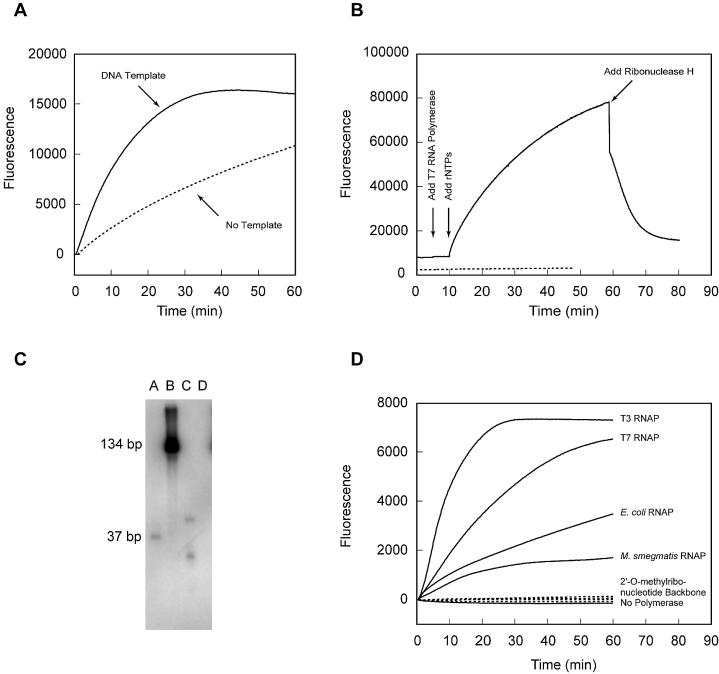Figure 1.
Generation of background signals from molecular beacons containing a deoxyribonucleotide backbone during transcription reactions. (A) The fluorescence of transcription reactions containing T7 RNA polymerase and molecular beacon MB-poly(A)-FAM-DNA was monitored as a function of time. In the first reaction, DNA template T7-sinR-poly(A) was present (continuous line) and in the second reaction no template was present (dotted line). (B) The fluorescence of template-free reactions was monitored as the ingredients were added consecutively. The fluorescence of a reaction containing a molecular beacon [MB-poly(A)-FAM-DNA] that possessed a deoxyribonucleotide backbone (continuous line) was compared to the fluorescence from an otherwise identical reaction in which the molecular beacon [MB-poly(A)-FAM-2′-O-methyl] possessed a 2′-O-methylribonucleotide backbone (dotted line). (C) Denaturing gel electrophoresis analysis of the radioactively labeled products of template-free reactions. Lanes A and B contain size standards, lane C contains the products of a reaction containing MB-poly(A)-FAM-DNA (length 30 nt) and lane D contains the products of an otherwise identical reaction containing MB-poly(A)-FAM-2′-O-methyl (length 18 nt). (D) Template-free transcription reactions containing MB-poly(A)-FAM-DNA and four different RNA polymerases (RNAPs) (continuous lines) were compared to four otherwise identical reactions containing MB-poly(A)-FAM-2′-O-methyl (dotted lines).

